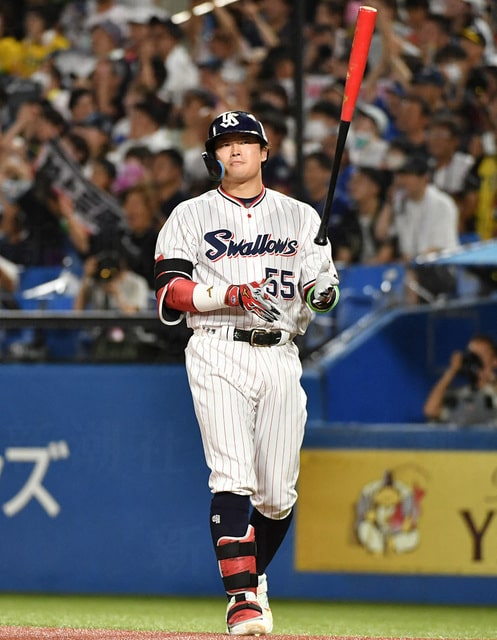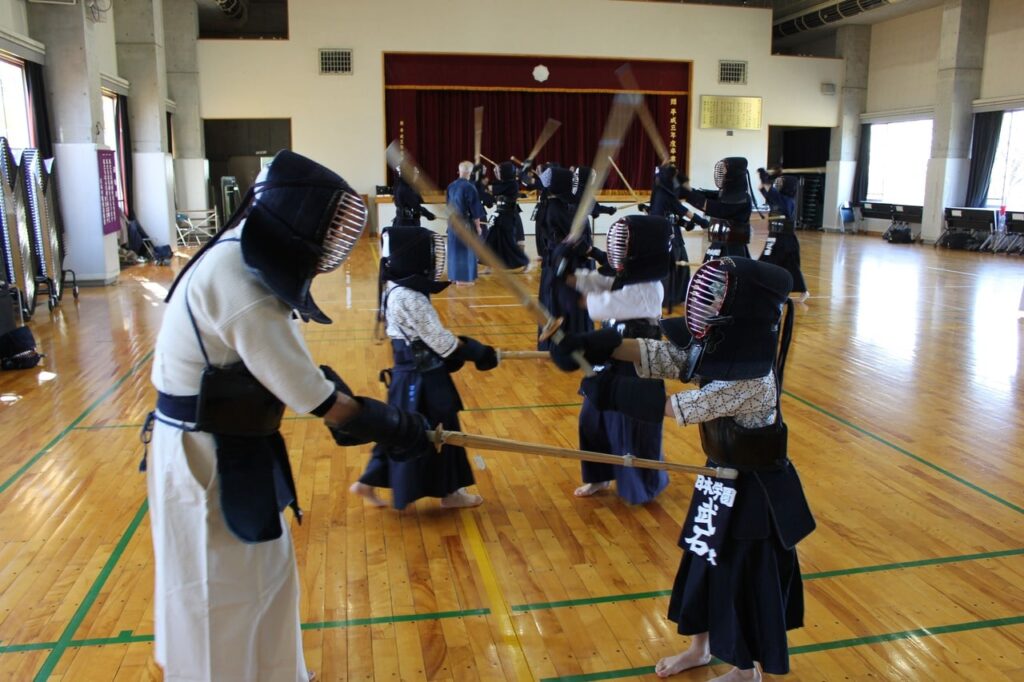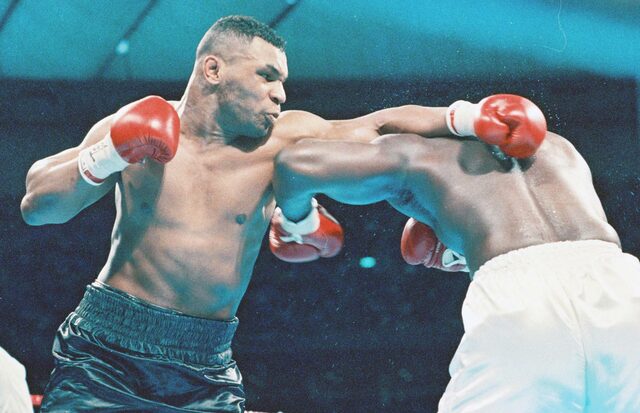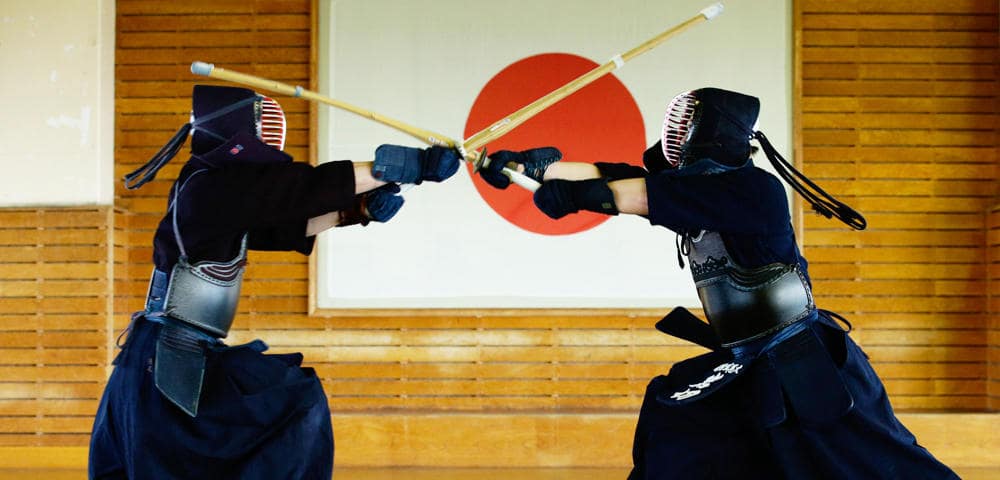
Kendo Nishou-ryu is an attractive practice style for many Kendo enthusiasts due to its unique techniques and historical background.
Unlike kendo, which traditionally uses a single shinai, two-sword-ryu holds a shinai in both hands and attacks and defends with each sword.
This unique style opens new perspectives for practitioners, not only in kendo technique, but also in strategic thinking and use of the body.
This guide begins with the basic concepts of kendo two-wielding, and covers a wide range of techniques, including basic postures, movements, and applied techniques in practice.
We will also explain in detail specific menus for dual-wielding practice, tips for improving technique, and points to note in daily practice.
Through this guide, you will deepen your understanding of the world of Kendo Nishou-ryu and accelerate your personal growth in practice.
Practicing dual wielding is a new challenge in Kendo, and it not only leads to technical improvement, but also to inner spiritual growth.
目次
- 1 Introduction : The charm and basic concept of kendo dual wielding
- 2 The history of two-sword fighting and its position in modern kendo
- 3 Basic posture and movements for dual-wielding practice
- 4 How to practice basic and advanced skills
- 5 Dual-wielding training menu and daily routine
- 6 Tips and notes for improving your skills
- 7 Summary and further exploration of dual wielding practice
Introduction : The charm and basic concept of kendo dual wielding
Dual sword fighting in Kendo has fascinated many swordsmen with its unique form and technique.
While regular kendo uses a single bamboo sword, dual sword-ryu holds a bamboo sword in each hand, allowing for a wider range of attacks and defenses.
This style also provides training for a variety of situations in actual combat, honing not only the swordsman’s technique but also his strategic thinking.
Basic concept of dual wielding
When practicing two-sword style, it is common to hold a short bamboo sword (kodachi) in the left hand and a long bamboo sword (odachi) in the right hand.
This arrangement mimics the use of swords and wakizashi in actual combat, allowing the swordsman to develop the ability to wield two weapons of different lengths.
The charm of dual wielding
- Technical Versatility : Dual wielding adds depth to offensive and defensive techniques, allowing swordsmen to master the art of wielding two weapons at once instead of just one.
- Promote strategic thinking : Using two bamboo swords develops the ability to formulate multi-pronged strategies against your opponent. This also improves the ability to deal with multiple enemies on the battlefield.
- Body balance and harmony : Handling bamboo swords of different lengths with the left and right hands improves the body’s sense of balance and trains left-right coordination.
- Inner growth : Practicing dual wielding not only improves your technique, but also leads to spiritual growth and self-insight. Develop inner strength and calm through challenge and continuous self-transcendence.
Dual sword fighting is the gateway to the deep world of Kendo, and is the perfect training method for swordsmen who seek not only technical improvement but also spiritual maturity.
Through this guide, you will understand the basic concept of Nishou-ryu, experience its charm, and explore new possibilities in your own Kendo life.
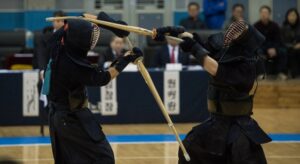
The history of two-sword fighting and its position in modern kendo
Dual sword fighting has a special place not only in Kendo but in Japanese martial arts in general.
This unique form developed independently within Japan’s samurai culture, and its techniques and spirit have been inherited as important elements in modern Kendo.
Historical background of dual wielding
The origins of dual wielding were made widely known by Miyamoto Musashi, a legendary swordsman who was active during the Sengoku period.
Musashi was a tactician known for his “Book of Five Rings,” and the Niten Ichiryu, which he founded, is famous as a representative school of dual-sword swordsmanship.
Musashi won many battles using this style, holding a short sword in his left hand and a long sword in his right hand, and his techniques and tactics had a great influence on future generations.
Dual sword fighting in modern kendo
In modern Kendo, the style that uses a single Shinai is the mainstream, but Nito-ryu is practiced through specific schools and study groups, and its techniques and spirit continue to have important value.
Two-sword fighting has a richer variety of attacks and defenses than general kendo, and practicing this allows the swordsman to develop a broader perspective.
The modern influence of dual wielding
Dual sword fighting has a great impact on the swordsman, not only technically, but also mentally.
This practice encourages swordsmen to push their limits and explore new possibilities.
Dual-wielding techniques also contribute to simultaneous attack and defense, as well as improving the swordsman’s physical balance and flexibility.
The position of two-sword fighting in modern kendo goes beyond the mere acquisition of techniques, and can be said to be a journey for the swordsman’s own inner growth and deep understanding.
Nisword-ryu continues to maintain its value even today as a means to deeply understand not only the technical aspects of Kendo, but also the philosophy and spirit of the martial art.
Through this traditional practice, Kendo practitioners can hone both their technique and spirit.
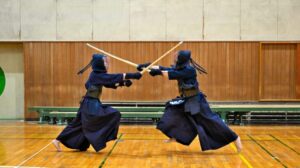
Basic posture and movements for dual-wielding practice
Accurate understanding and practice of basic postures and movements is extremely important when practicing dual wielding.
This chapter explains the basic postures and movements of Nito-ryu, as well as how to choose an appropriate Shinai sword, which you should know before you start practicing.
How to choose the right bamboo sword
In Nito-ryu, two Shinai are used: a long Shinai (Odachi) held in the right hand and a short Shinai (Kodachi) held in the left. How to choose a shinai is very important in solidifying the foundation of dual-wielding practice.
- Odachi : Choose one that is the same as or slightly shorter than a typical Kendo bamboo sword. It is important to consider ease of handling and swinging, and choose one that suits your height and arm length.
- Kodachi : Kodachi is shorter than Odachi and requires a length that is easy to handle. In general, it is best to choose one that matches the length of your arm. Kodachi is often used for defense, so one that is light and easy to handle is recommended.
Establishing basic posture
The basic posture of two-sword fighting, like other techniques in kendo, is important for stability and ease of movement. By establishing basic posture, you lay the foundation for effective attack and defense.
- Foot position : Feet slightly wider than shoulder width apart, front foot forward, back foot slightly outward. This posture provides a stable standing position and ensures ease of movement.
- How to hold a shinai : Odachi is held in the right hand, and kodachi is held in the left hand. The odachi is held slightly diagonally, and the kodachi is held below the odachi, almost parallel to the sword. At this time, keep your elbows naturally bent and relaxed.
- Upper body orientation : While facing forward, prepare to freely manipulate both swords by placing your weight slightly to the right. The gaze is fixed on the other person’s eyes.
Although the basic posture and movements of Nisword-ryu have much in common with other techniques in Kendo, it requires the uniqueness of handling two Shinai at the same time.
Choosing the appropriate shinai and establishing the correct basic posture are essential to successful dual-wielding training.
By firmly mastering these basics, you will be able to learn dual-wielding techniques more deeply and effectively.
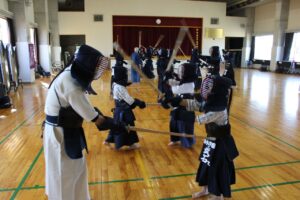
How to practice basic and advanced skills
In dual-wielding kendo, mastering basic techniques supports progression to applied techniques.
Here, we will start with the basics of techniques unique to dual-wielding, and then explain techniques and tactics that apply them.
Basics of hitting techniques
Unlike kendo, which uses a single shinai, there are a variety of techniques used in dual wielding that use the left and right shinai. Mastering the basic techniques is a step toward advanced techniques.
- Chokuzuki : A technique of thrusting from the front using a large sword. Kodachi is used for defense or for preparing for other attacks.
- Menuchi (menuchi) : A technique in which you strike the opponent’s mask (the armored part of the face) using an odachi or kodachi. By using the two swords alternately, it is possible to launch continuous attacks.
- Koteuchi : A technique aimed at the opponent’s wrist. It is important to skillfully use the Odachi and Kodachi to break through the opponent’s defense.
Applied techniques and tactics
After learning the basic techniques, you will practice advanced techniques and tactics that combine them. Applied techniques include moves that provoke the opponent’s attacks, counterattacks in response, and moves that catch the opponent’s surprise.
- Continuous attack : A technique of launching an attack with one shinai and then quickly following up with the other shinai. Break down your opponent’s defense by attacking different parts in succession.
- Irregular attack : A technique that launches an attack at an angle or timing that is difficult to predict. You can use the unique movements of dual wielding to keep pressure on your opponent.
- Parrying and counterattack : A tactic of parrying the opponent’s attack with the kodachi and then immediately counterattacking with the odachi. The balance between defense and attack is important.
In dual-wielding kendo, learning basic techniques is very important, but by practicing applied techniques and tactics that make use of those skills, your ability to respond in actual matches and competitions will greatly improve.
Through daily practice, make these techniques your own and get closer to the essence of two-sword kendo.
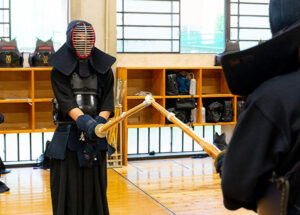
When practicing dual-wielding kendo, incorporating a unique practice menu and daily routine is extremely important not only for improving technique, but also for increasing physical strength, flexibility, and reaction speed.
Below, we will introduce effective practice methods and daily routines for two-sword kendo.
Exercises to improve strength and flexibility
Two-sword kendo requires a wider range of movements than regular kendo, so it requires a high level of physical strength and flexibility. The exercises below will help you develop these abilities.
- Running and sprinting : Regularly run or do interval sprints to train your endurance and explosive power at the same time.
- Strength Training : Incorporate exercises that specifically strengthen lower body and core strength, supporting stable posture and movement.
- Yoga and Stretching : Regularly practice yoga and stretching to improve your flexibility and balance, prevent injuries, and increase your range of motion.
Improving reaction speed and technology
In dual-wielding kendo, quick reactions to the opponent’s movements and application of appropriate techniques are important. The following exercises are good for developing these abilities.
- Practice swings : Practice swings with both hands a lot to get used to handling the Odachi and Kodachi, as well as improve muscle strength and endurance.
- Drills to train reaction speed : Practice with a partner to perform unpredictable attacks and drills that require immediate reactions to the opponent’s movements.
- Practical combat format training : Through training that incorporates actual combat formats, you will improve your ability to apply and make judgments in actual combat. You can also train your ability to make calm decisions under stress during battles.
These practice menus and daily routines in dual-wielding kendo are designed to improve all-round strength, flexibility, reaction time, and technique.
Combining daily practice with these special routines will help you get to the heart of dual-wielding kendo, achieving technical maturity and spiritual growth.
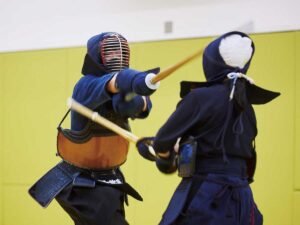
Tips and notes for improving your skills
In the process of learning dual-wielding kendo and honing your skills, it’s important to pay attention to tips for effective progress and common mistakes that can hinder your progress.
Here, we will explore tips and things to keep in mind when practicing dual-wielding kendo.
Common mistakes to avoid
There are several mistakes that many beginners make when it comes to dual-wielding kendo. By avoiding these, you can improve your technique more effectively.
- Relying on one sword : Relying too much on either the Odachi or Kodachi and underutilizing the other will not take advantage of the potential benefits of dual wielding.
- Using too much force : If you use too much force, your accuracy and speed will be compromised. Two-sword kendo requires technical precision and speed rather than strength.
- Neglecting the basics : Focusing too much on advanced techniques and complex movements and neglecting to practice basic postures and striking techniques will hinder your long-term progress.
Continuous improvement and self-evaluation
Continuous improvement and self-evaluation in daily practice is essential to progress.
- Regular goal setting : By setting short-term and long-term goals and practicing systematically toward them, you can stay motivated and gradually improve your skills.
- Self-evaluation and feedback : It is effective to record video of your own techniques and matches and look back on them to clarify areas for improvement and devise specific practice methods. Also, actively seek feedback from your instructors and seniors.
- Be flexible : It’s important to have the flexibility to constantly learn and try new techniques and tactics, rather than sticking to one method or technique. This will develop your ability to respond to different situations.
Improving your skills in dual-wielding kendo is achieved through proper practice, mindset, and continuous effort.
Avoiding common mistakes and constantly evaluating and improving your technique and spirit are the keys to paving the way to becoming a true swordsman.
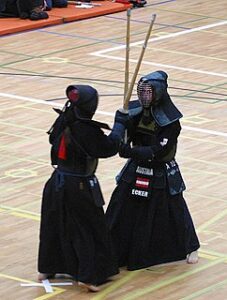
Summary and further exploration of dual wielding practice
As a unique martial art form, dual-wielding kendo offers a unique technical and mental challenge to the swordsman.
Through this article, we started with a basic understanding of dual-wielding kendo, learned basic techniques and applied techniques, practice menus, and tips and precautions for improving.
These knowledge and practices are just the entrance to the profound world of Kendo.
Further exploration
Learning about two-sword kendo does not end here. There is no limit to how much you can learn, and there are always new discoveries to be made. The journey to proficiency continues as follows:
- Continuous practice : We aim to improve our skills through repeated practice of basic techniques and exploration of applied techniques.
- Have a broad perspective : Through comparisons with other forms of kendo and martial arts, you will deepen your understanding of dual-wielding kendo and expand the range of techniques.
- Spiritual Growth : The practice of Nisword Kendo is more than just physical training. Face your inner self and pursue spiritual strength and peace.
summary
Practicing dual-wielding kendo not only improves your technical skills, but also promotes your spiritual growth as a swordsman.
Through daily practice and self-reflection, you will refine your Kendo skills as well as your humanity as a swordsman.
Dual-wielding Kendo is a martial art that seeks balance between body and mind, and the quest is a lifelong journey. With the basics and practical knowledge you have learned this time, let’s move on to further explore dual-wielding kendo.
This journey is also a journey of self-discovery and growth.
